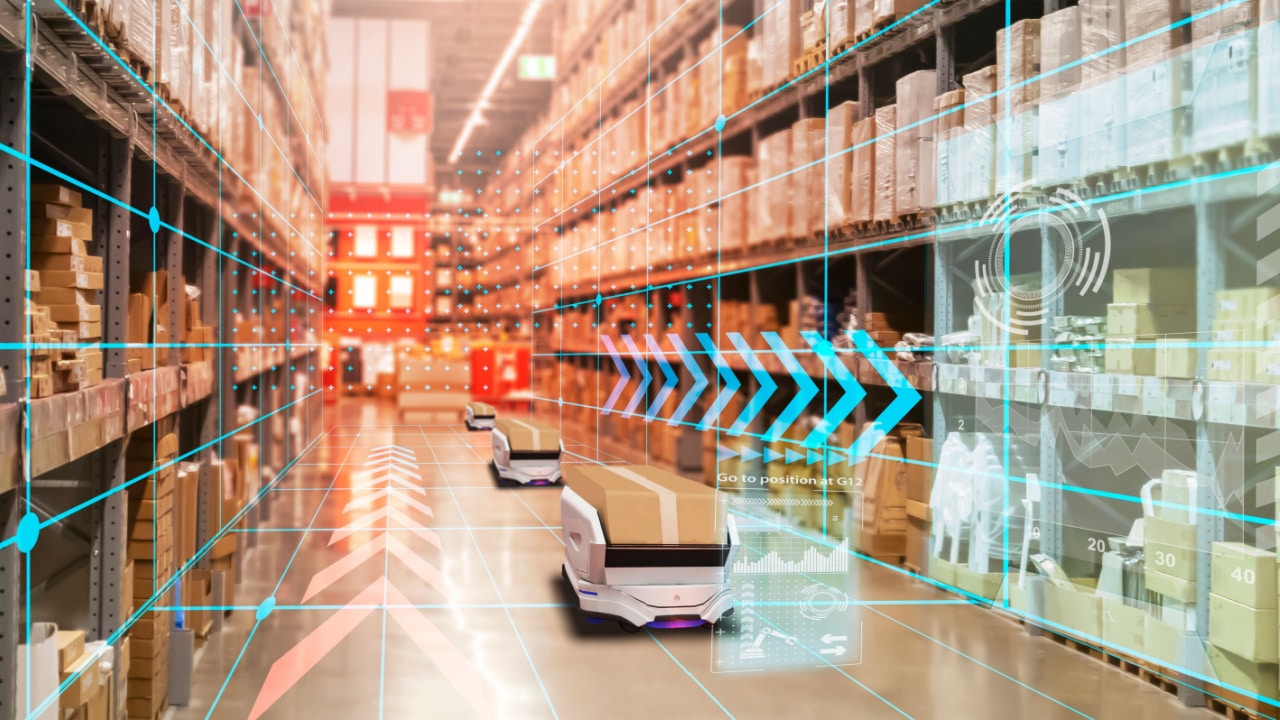The recent DHL Trend Report has brought a quite revealing input: computer vision or visual Artificial Intelligence (AI) technology is becoming widely esteemed in the logistics sector due to its multiple applications and diverse benefits. Even anticipating that this technology within the forthcoming five years, it will seamlessly integrate into the fundamental facets of standard procedures in the realm of logistics.
Supported by means of AI algorithms, this field unlocks an untapped business potential allowing systems and applications to generate insights, act autonomously, deliver alarms or even making recommendations though collecting and gathering visual data from images, video streams or other visual inputs. The myriad of benefits include improving workplace safety by identifying potential hazards in warehouses or other logistics facilities; enhancing employee health by recognizing fatigue or lack of protection equipment; detect congestions and inefficiencies; continuous monitoring of asset flaws, mistakes and anomalies; or just enabling automated process or supporting decision-making in operations related to packages shipments such us load planning, storage capacity calculations or inventory control.
Nevertheless, this productivity and efficiency boost does not come with unimportant concerns. Mainly, and perhaps the biggest roadblock, technology acceptance driven by resistance to remain fully monitored and compliance with data protection and cybersecurity threats in this field. Or in addition the need to replace existing cameras or Video Management Systems (VMS), besides technology hardware agnostics, to cope with particular circumstances, use cases or even contour conditions, in order to obtain accurate results.
Computer vision stands as an integral component in the comprehensive automation and digital transformation of logistics, heralding a paradigm shift in the future landscape of the industry, serving as the foundation and catalyst for advancing logistics, ushering in enhanced efficiency, heightened safety, and genuinely sustainable operational practices.
“As computer vision evolves thanks to technology advances in depth perception, 3D reconstruction, and interpretation of dark and blurred images, it will soon unlock many more opportunities and bring additional benefits to logistics companies.”
The main inputs and contributions are:
- It is undoubtedly that computer vision is gaining traction among the productivity fabric and specially in the logistics’ sector. Its market is delivering an increase in the number of technology providers and predictions establish a growth from USD $9.40 billion in 2020 to $41.11 billion in 2030.
- This AI visual input analysis brings profitable applications in health and safety, operations, asset management, and shipments processing, as it even appears to have moved through the Gartner Hype Cycle Plateau of Productivity.
- These systems, AI-powered, need series of training with enormous high-quality visual data sets, to recognize, identify and deliver expected outcomes, drawing a parallel just like human vision. Nevertheless, they rapidly exceed our natural capabilities.
- The training comes from performing Machine Learning (ML) techniques, applying self-teaching algorithms and artificial neural networks. In addition to a convolutional neural network (CNN) which breaks images down into tagged labels and performs the math on these labels to repeatedly check prediction accuracy.
- Computer vision accuracy rates for identifying and classifying objects increased from 50% to 99% in less than a decade.
- This technology includes several processes from which built upon countless functionalities. Image segmentation, to enhance analysis; blob checking, to identify discrete spots of connected pixels as image landmarks; pattern recognition; or image processing, for stitching, filtering and pixel counting; are some of them.
- Already today, computer vision is proving its worth in a vast range of applications within warehouses, yards, depots or other logistic facilities. For instance, for accident prevention after movements’ analysis, ergonomic pose improvements by representing a skeleton-like human body, tracking PPE non-compliance, detecting human fatigue, evaluate workflow patterns under heatmaps, pick path optimization recommendations, access control, defect identification, fleet management, capacity assessment analysis or asset counting.
- Other examples in the retail and manufacturing sectors include improved layout configuration, cashierless checkout, inventory management, customer pattern recognition, quality inspection, equipment monitoring or process optimization.
- Similarly, computer vision has a widespread adoption combined to other technology trends such as Digital Twins, Drones, Robotics, Outdoor autonomous vehicles or Mixed Reality, among others.
- Adopting computer vision implies certain challenges. A problem-oriented solutions needs highly specific training with vast amounts of high-quality data. Costs can include camera upgrades, new tech investment, ongoing platform maintenance, and workforce upskilling and reskilling. Or even bearing in mind a cost-balance accuracy due to the requirements to store, process, analyze and maintain the visual data.
- Regarding its implementation, technology and IT investments stands in the way, data privacy and security awareness, the fact of a never 100% correct reliable outcome which could cause conflicts, special circumstances or contour/environmental conditions that can lower accuracy radically or block camera’s visibility, personnel reluctancy as per an invasive perception feeling, to name some examples.
“As with any technological leap, there are considerations of data security, ethical implications, and the need for upskilling the workforce. The convergence of human expertise and AI augmentation requires thoughtful orchestration and collaboration – from all of us!”




In what specific ways does AI-powered computer vision enhance warehouse safety and operational efficiency—such as by detecting PPE non-compliance or generating heatmaps—and how might these applications evolve over the next five years? url
url
Good morning, thank you very much for your interest in our initiatives, you can find more information on this subject in the link provided below or consult any additional information through the mail innovacion@apba.es
https://innovacion.apba.es/en/queue-detection-and-waiting-time-prediction-system-for-the-controlled-access-gates-in-the-port-of-algeciras/
https://innovacion.apba.es/en/intelligent-reading-of-license-plates-and-container-codes/
https://innovacion.apba.es/en/autonomous-traceability-and-geolocation-of-the-cargo-with-artificial-intelligence/